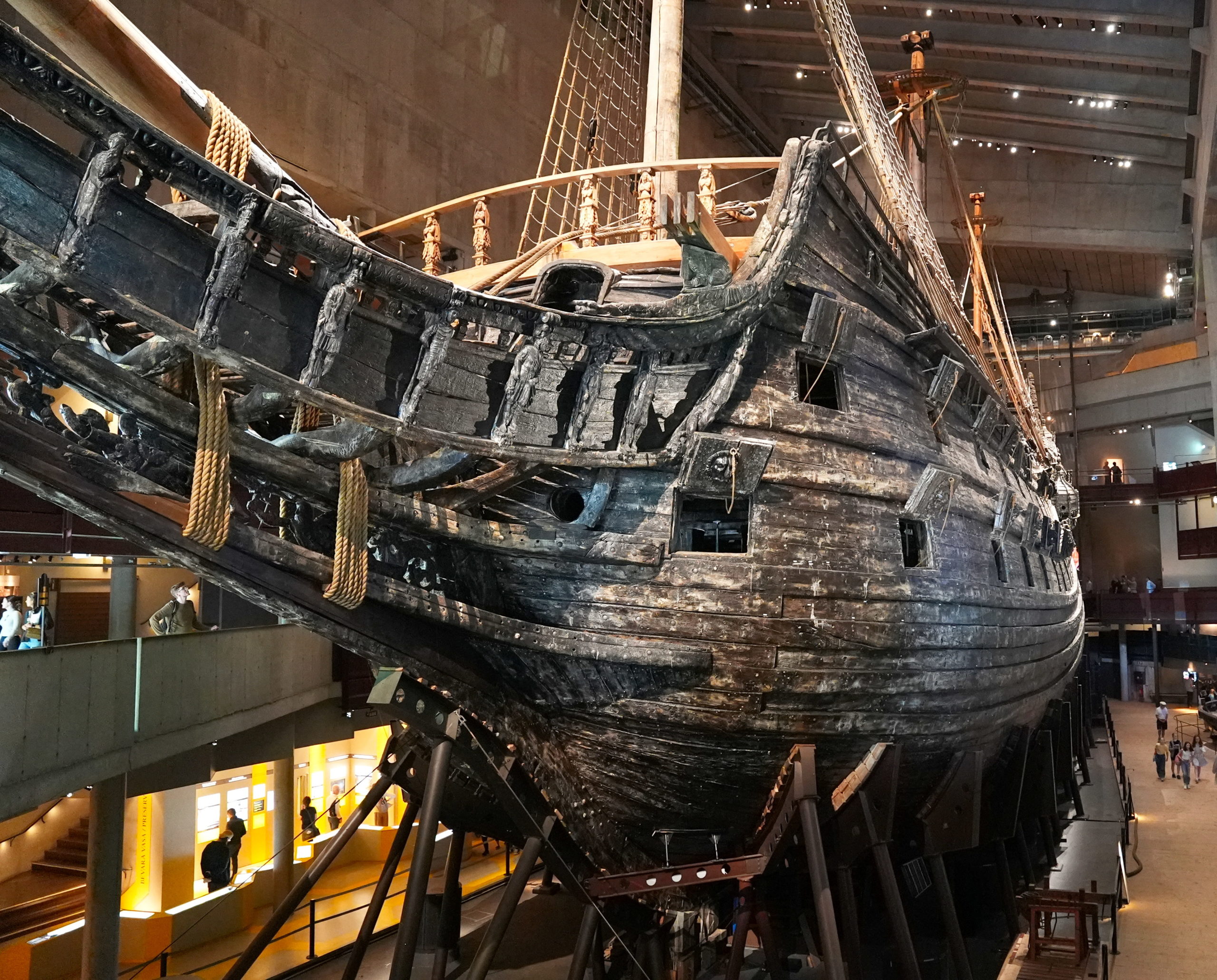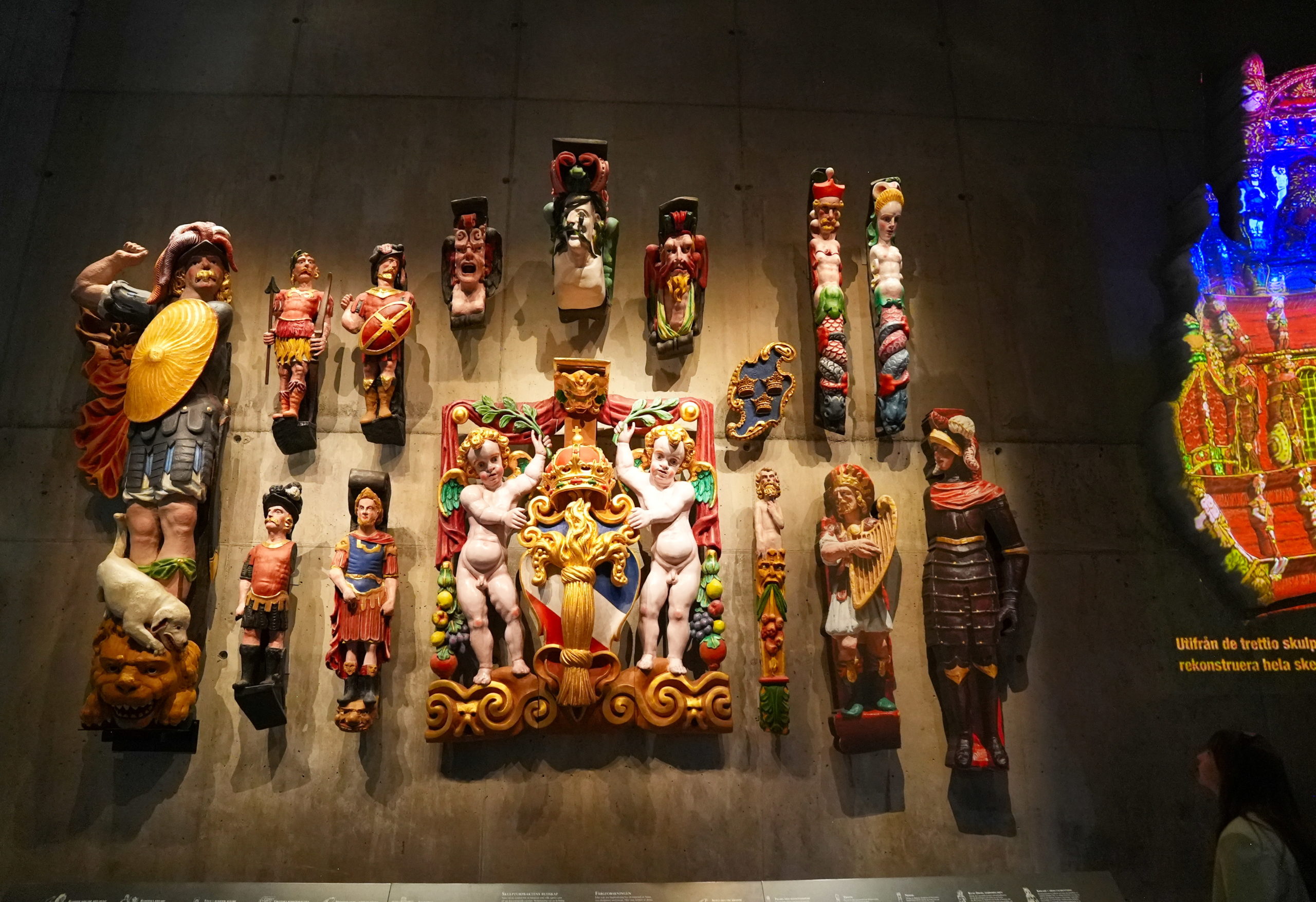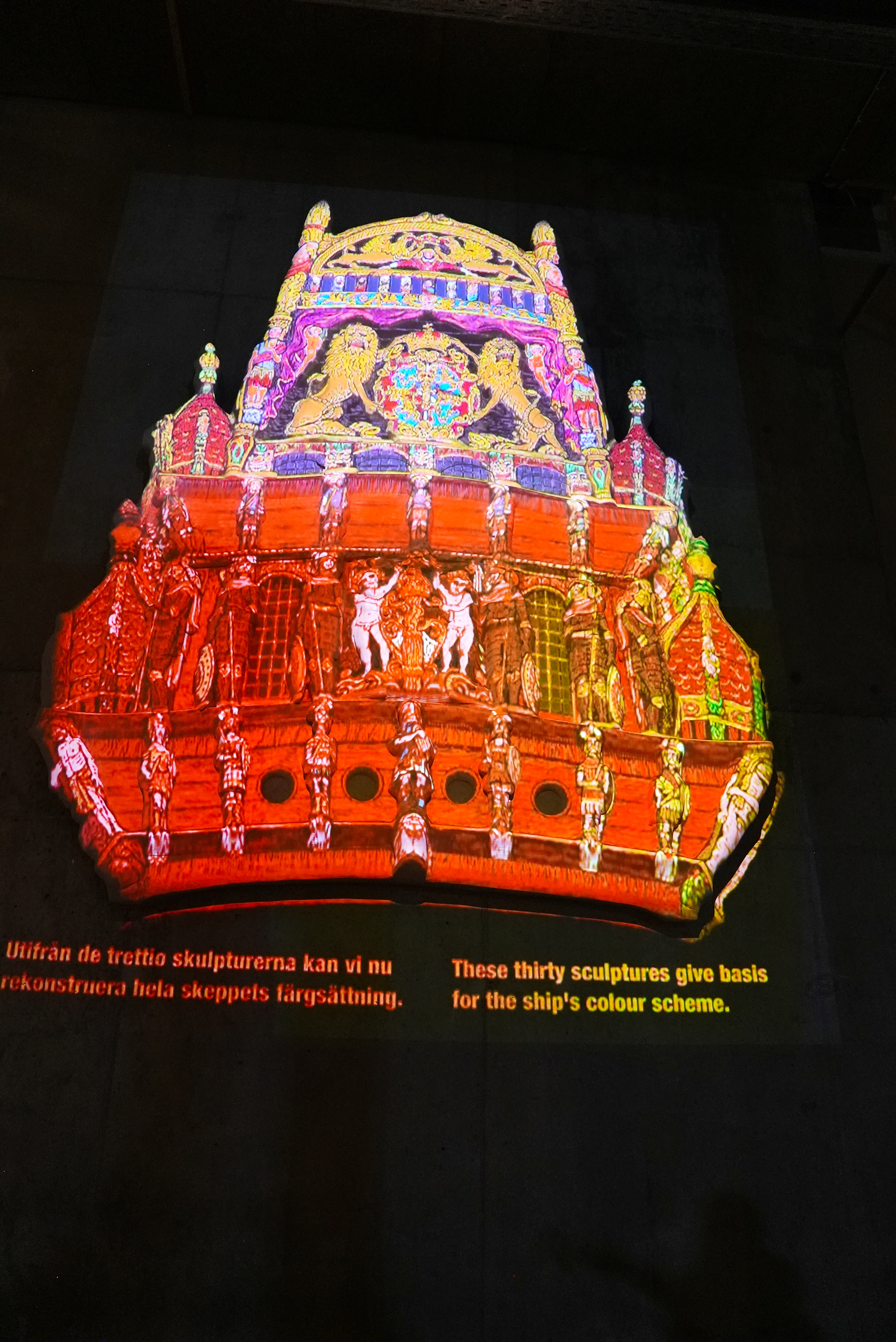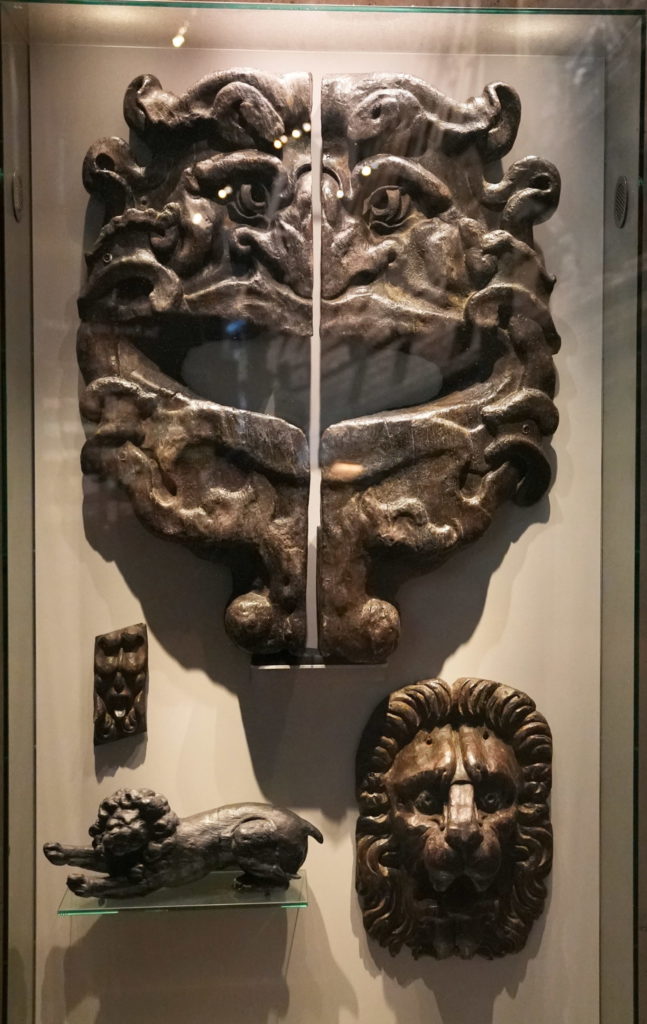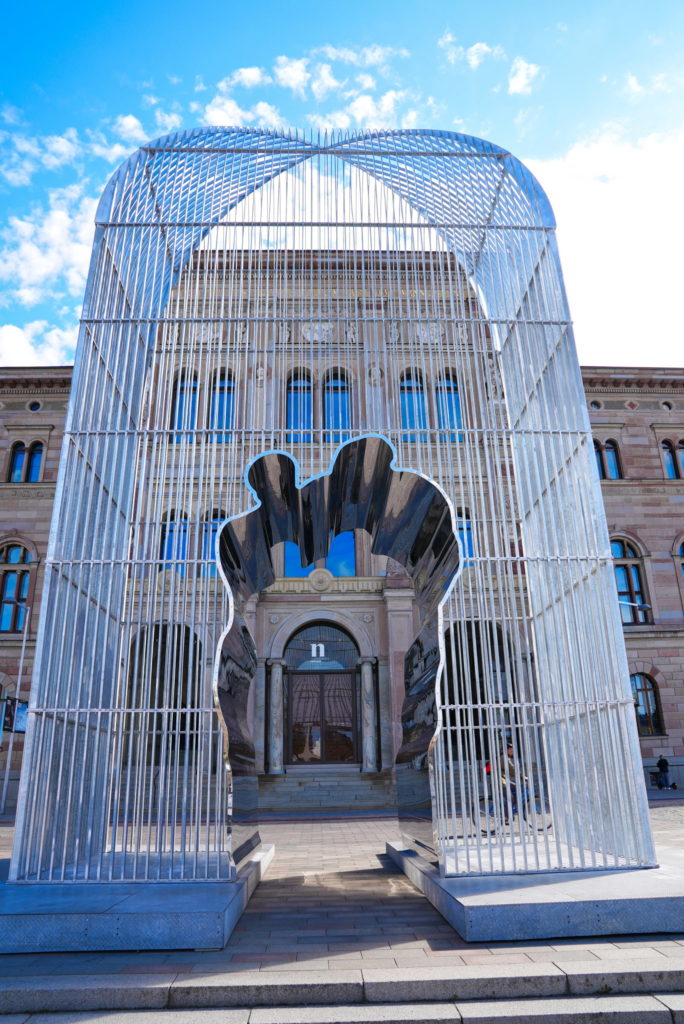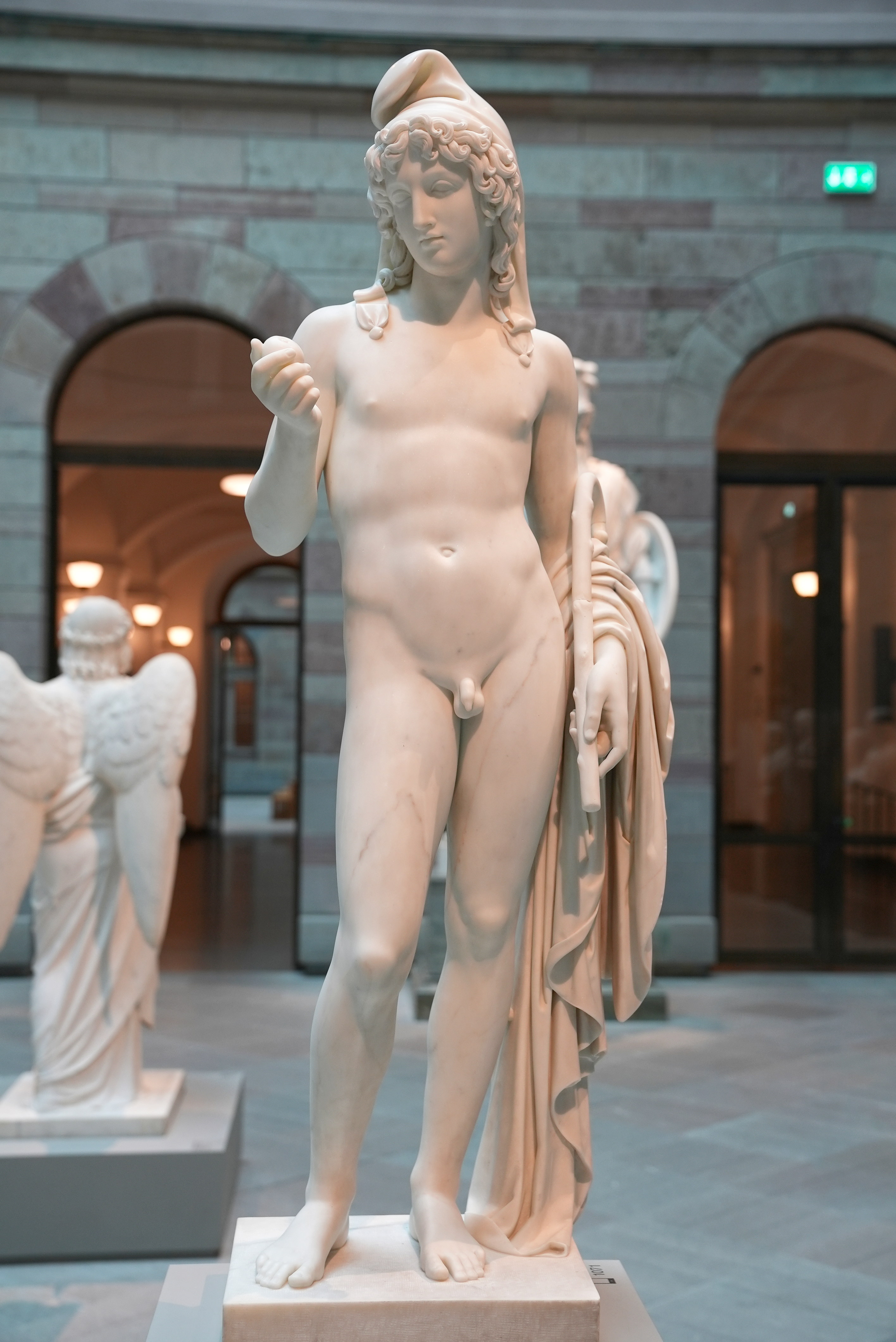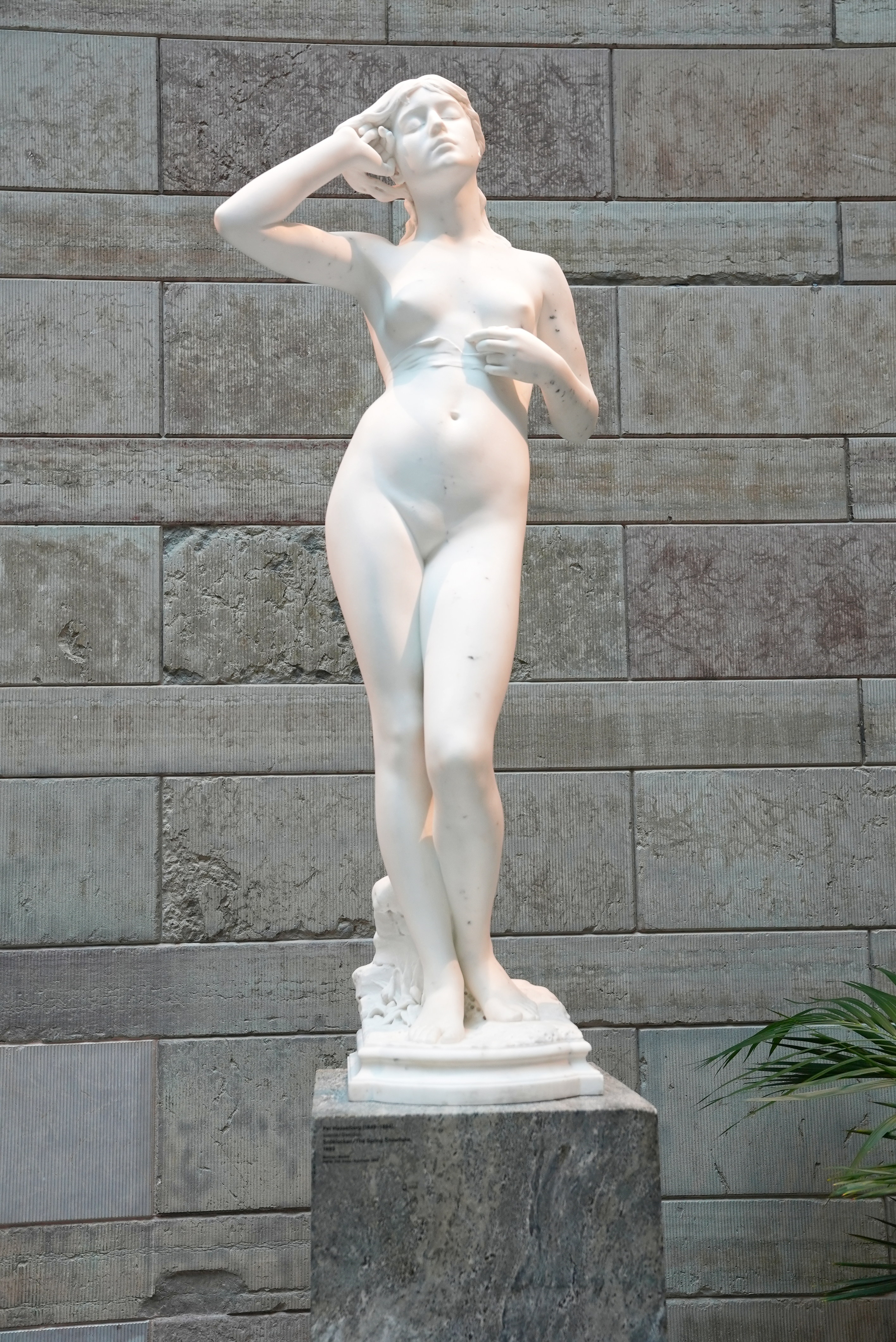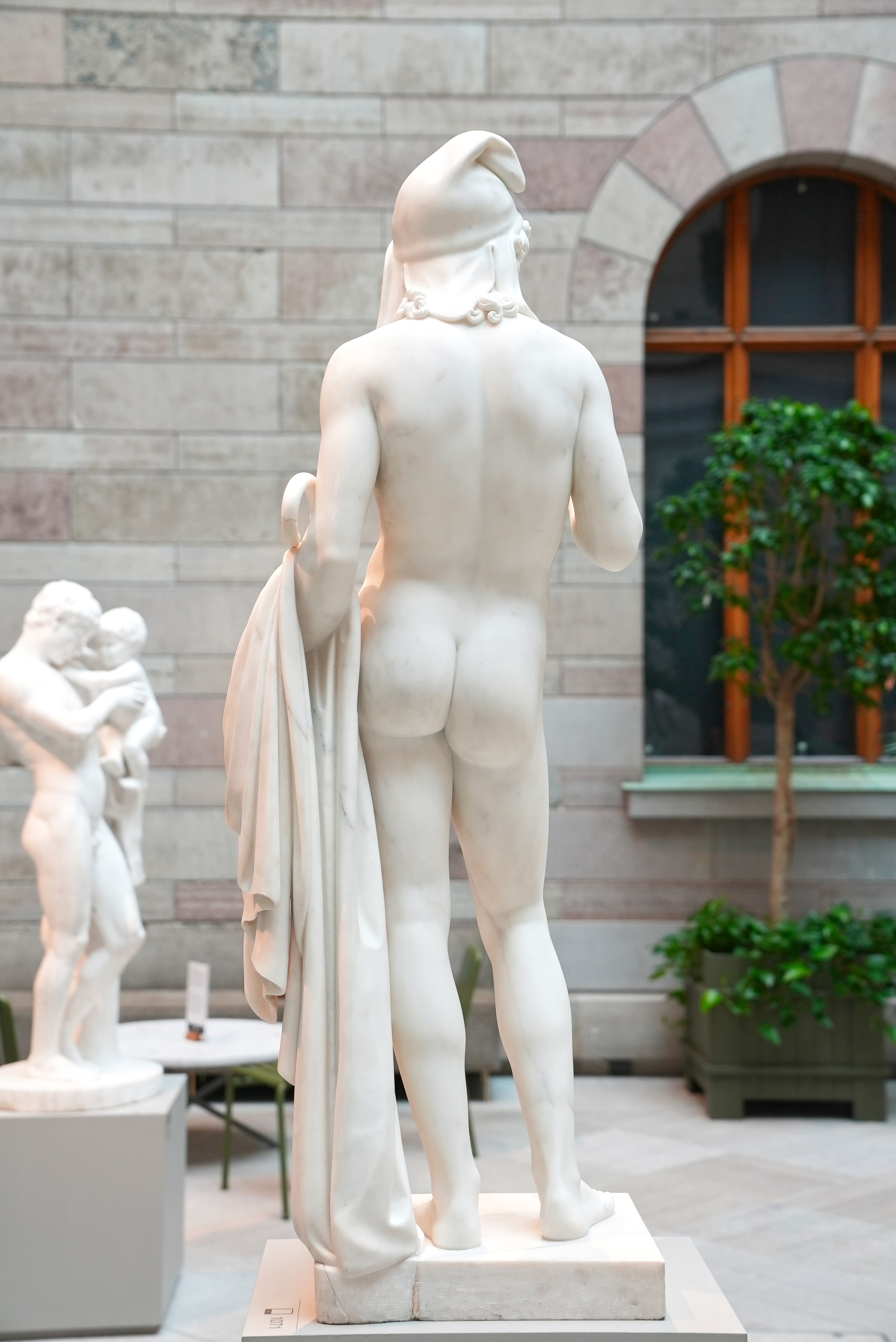Vasa is a Swedish warship built between 1626 and 1628. The ship sank after sailing roughly 1,300 meters into her maiden voyage on 10 August 1628. She fell into obscurity after most of her valuable bronze cannons were salvaged in the 17th century, until she was located again in the late 1950s in a busy shipping area in Stockholm harbor. The ship was salvaged with a largely intact hull in 1961. She was housed in a temporary museum called Wasavarvet (“The Vasa Shipyard”) until 1988 and then moved permanently to the Vasa Museum in the Royal National City Park in Stockholm. The ship is one of Sweden’s most popular tourist attractions and has been seen by over 35 million visitors since 1961. Since her recovery, Vasa has become a widely recognized symbol of the Swedish Empire.
When the Vasa was built, she was intended to be a symbol of Sweden’s military and political power, which also included Gustav II Adolf’s authority as warrior king. Great expense was spent on decorating and equipping the ship. She was also one of the country’s largest and most heavily armed warships when she was built and she was decorated with hundreds of sculptures in bright colors.
The direct cause of the Vasa sinking was that she was too unstable to sail in stronger winds. Although she failed a standard stability test while at berth, she was allowed to sail because Gustav II Adolf was pressing to be able to use her in the naval war against Poland, where Sigismund III was king. Inquiries were held after the sinking, but since the king himself approved all measures, no one could be judged as responsible for the sinking.
Near the actual remains of Vaca is a model, depicting the boat with sails engaged and cannons at the ready. Our first thought is, “What a mess.” This would be an extremely difficult boat to control and maintain. Yikes!
This was to be a symbol of Sweden’s military and political power, and, if you are rich and powerful, you can afford to add all sorts of cool designs rather than metal plating or uneven surfaces to deflect cannon shots.
There was no attempt at camouflage. On the other hand, perhaps it was a lure, with the purpose of inciting the enemy to fire shrapnel just to deface all the pretty pictures.
I am not a ship builder, but even I can see that Vasa needed a deeper draft and more ballast. Once this puppy started tilting, there was no way to right her. And down she went.
The writing on the wall states: Vasa was carrying 120 tons of stones as ballast. This was not enough to enable the vessel to cope with even a light squall. For stronger winds, considerable more ballast was needed but then the ship’s gunports would have been too close to the waterline. The hull should have been somewhat wider and deeper to make room for more ballast.” Well, duh.
Now that we’ve noted what they did wrong, let’s look at the remains of this baby.
Vasa is impressively large. You can see that there are original sculptures in the bow, plus replaced statues on the deck. I don’t think the rope is original.
If a few dozen cannon don’t frighten you, well, there are fierce lion heads depicted on each of the little cannon doors.
Note that most naval cannons did not shoot cannon balls, but rather a collection of chains, nails, and other bits of metal designed to tear apart both men and sails.
Looking at this, you might wonder why they spent so much money, time, and energy to build a military craft rather than something more useful. Well, a placard informs us that, indeed, when military ships were not engaged in military, they regularly served as cargo ships and passenger liners, transporting goods and people from port to port.
Looking at the wooden siding, we can see that it is somewhat ill-fitted. That did not stop them from adding little sculptures and figurines in every possible location.
We are assuming that this looks more intimidating from a distance…
At this point, we are thinking that the sculpture maker’s guild has WAY too much influence in the construction of Vasa.
A placard states: For whom was all this effort invested? For the king, for God, the crew, or the enemy?
No matter how nice these look when newly painted, it seems like a few month on the open sea would leave them looking something like this.
If this was a church, you could understand all the carvings. But it seems like these boat designers and builders didn’t really know what a boat was for.
A placard tells us: After twelve years of paint research some thirty of the Vasa’s 500 sculptures have been analysed. Fifteen of these are shown here. From studies of these sculptures we understand the underlying principles of the ship’s colour scheme. The research results have not answered every question. The dark brown areas on the sculptures represent parts where no paint has been recovered.
Another placard states: Apart from a few exceptions, the exact position of these original sculptures remains unknown. A majority were however discovered in the cabin and may have been furniture decoration.
Notice the colorful image on the right.
No one knows what the back side’s colors really were, so the folks at the Vasa museum thoughtfully provide examples.
You are starting to wonder if there was even a place to sit down on this boat, or was every square centimeter covered with some design?
The large mask was placed around the hole for the whipstaff, the lever of the tiller. A grotesque face with large squinting eyes is peering beneath heavy eyebrows towards the helmsman.” Yeah, why?
“The Vasa symbolised a ruler who wished to perform stylishly in the European scene. The sculptures were a tribute to the king but at the same time admonished the Swedish people to live up to the virtues possessed by Gustavus Adolphus; courage, wisdom and piety. Inspiration came from the Bible, ancient mythology, and the world of sagas and fables.”
National Museum of Fine Art
The National Museum is a central Swedish state museum in Stockholm and Sweden’s largest art museum. The collections consist of painting, sculpture and art on paper from around the 16th century to the 20th century, as well as arts and crafts and design objects from the 16th century to the present day. The total number of objects amounts to approximately 700,000. The museum is located on Blasieholmen in Stockholm, in a building designed for the purpose by the German architect Friedrich August Stüler. The building was completed in 1866, but the history of the museum is older than that and goes back to 28 June 1792 when the Royal Museum was founded. The National Museum is thus one of Europe’s oldest art museums.
We visit the museum and discover, directly in front of it, some sort of cage with an asymmetrical tunnel.
It’s a fun house mirror, put here, I guess, to be fun.
It is designed to reflect your image as having very long legs and a very short torso. Well, I guess this must be fun to someone…
Okay, let’s go inside.
There are a great many statues here, as in, rooms and rooms of them.
Notice the detail, not only of the chainmail, but of the fingernails and the veins in the arms. I once visited a sculptor’s shop (in, of all places, Colorado), and saw that the shop was full of human anatomy books. This is why.
Another example of the quality details these artists put into their work.
Another example of the details put into the statues. If your subject is wearing fur, you have to sculpt fur.
However, most of the statues are not wearing clothes, in the style of the Greeks and Romans.
Not all statues are marble. This fellow, looking like he just covered himself in oil, is an example of bronze sculpture.
Of course, there are tiny statuettes, typically featuring semi-naked girls covered in smooth materials, because it damn difficult to work in miniature.
When Joseph Ducreux was sent to Vienna in 1769 to paint Archduchess Marie-Antoinette’s portrait before her marriage to the French dauphin (the future Louis XVI), his fortune was assured. He was made a baron and appointed court painter. Ducreux specialized in portraits, in both pastels and oils. Fewer than 20 self-portraits are known, six of them physiognomic in character.
Le Silence.
This is in the museum. We don’t know why.
Knut Fjaestad made this stump chair out of a log, for some reason. It took him seven years, so it was named the Seven-Year Throne.
To achieve relief effects and surface textures, Knut combined whittling, oiling, tarring, and burning techniques. Knut called his carved wood furniture “fantasy works”.
Martin van Meyten painted the Sackska family. Do you think they look so similar due to inbreeding, or did Martin say, “Trust me, you all look better this way.”?
According to a placard: Commissioned by Carl Gustaf Tessin, this work shows his family in fancy dress. It was a tribute to his brother-in-law Johan Gabriel Sack, in Spanish costume and seated farthest left, next to his wife Eva Bielke in a red domino. Tessin is at the back rights, dressed as the Mezzetino character, while his wife Ulla Sparre wears a pilgrim’s dress and holds a staff. The group may have been performing a comic opera in the spirit of Mezzetino.
Karl Gustav, Duke of Småland, is being baptized in this painting by Elais Martin. Little Karl died at age 6 months and 28 days, so we don’t have a lot of information on his exploits and adventures. Nor do we know what there is some sort of box floating overhead.
Elias Martin was a landscape artist who was hired by Gustav III to paint scenes from the King’s life. As you can see, Elias had an inability to represent figures proportionally.
Adolf Ludvig Gustav Albert Couschi was born in Saint Croix in the Danish West Indies or in Africa. As a child, he was taken to Europe and given as a present to the Queen of Sweden. He is depicted here in Indian fancy dress, for some reason.
David Klöcker Ehrenstrahl painted this albino squirrel. It had been caught in the wild and was in a cage, but David thoughtfully posed it outdoors gnawing evilly on a nut or something.
Hans Georg Müller painted two owls fighting over a rat, for some reason, and the Swedish National Museum displays it.
The Cook is a c.1570 oil on panel painting by Giuseppe Arcimboldo. It is a still life of roasted meats – when the painting is turned upside-down, these form a human face via pareidolia. Does it? I’ll let the reader decide.
The Jurist: “What at first glance appears to be a scholar turns out on closer inspection to be a pile of books and papers, draped with a fur-trimmed coat, with dead fish and poultry beneath a black cap.” Some people have mad skills.
According to a placard: Eugène Jansson has portrayed himself as an elegant dandy, surrounded by naked men posing at the naval bath house. The muscular, heroic body, inspired by ancient models, was central to the male ideal of the turn of the century, and ideal to be attained by physical exercise and sunbathing. The picture was painted from a homoerotic perspective, at a time when sexual acts between men we illegal. This boundary-crossing subculture was a hidden but important part of the development of the modern city.
In this painting, David Klöcker Ehrenstrahl (the Squirrel from Hell guy) depicts two spaniels. that belonged to Queen Dowager Hedvig Eleonora. According to the placard, “The dogs watch us with lively eyes.”
This is another thing that you look at and think, “Yeah, that took skill, but so what?” I guess folks were looking for new, creative outlets back in olden times.
Royal Djurgården
Djurgården is an island in central Stockholm with forests, meadows, art works, and extensive walking and riding paths.
Djurgården is a relaxing place, with almost no one around. We’ve rented semi-motorized bicycles; pedal and the bike goes even faster. Plus there is a battery-powered motor on the front wheel for an extra boost.
One of the first sights we see is Skånska gruvan. “The Skånska gruvan was designed by architect Gustaf Wickman and was built as an exhibition pavilion for the Stockholm Exhibition in 1897. Exhibitors in the Skånska gruvan were the Scanian brick and sugar mills, the lime-cement and hard coal industries who joined together in a common Scanian pavilion in order to be more visible at the big exhibition. In addition to the connection to Skåne, Skånska gruvan got its name from an artificial mine.”
Of course, this isn’t that building. No, that building was destroyed by fire in 1977. This one was built in 2001 and kept the same name.
We don’t know if this is a private residence or a government building, but it’s still pretty cool.
Elmgreen & Dragset created Life Rings, a permanent outdoor, eight meters high sculpture. “The work takes a typically singular, reusable, lightweight, and often-weathered emergency tool, and multiplies it into absurdity. In this impossible-seeming tower configuration, it looks as if the life rings have mushroomed upwards, towards the sky. Each life ring is connected to other rings, creating a structure that resembles a chain-link system.”
My, the things you can see in Royal Djurgården!
In our next article, we explore the Soldiers and Churches of Stockholm!






